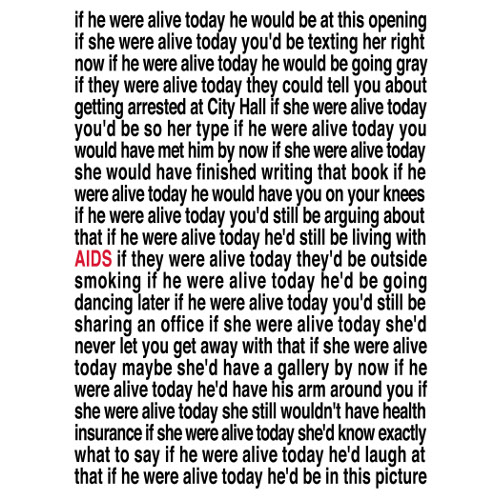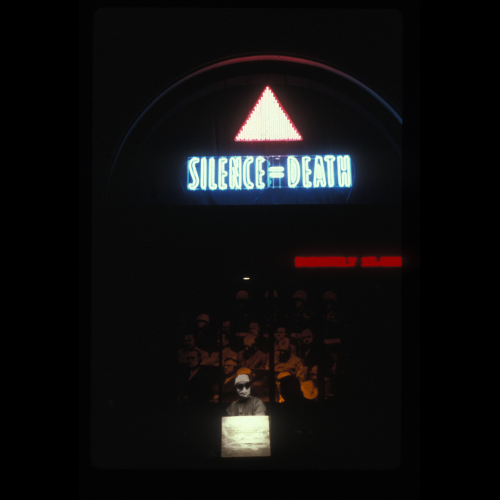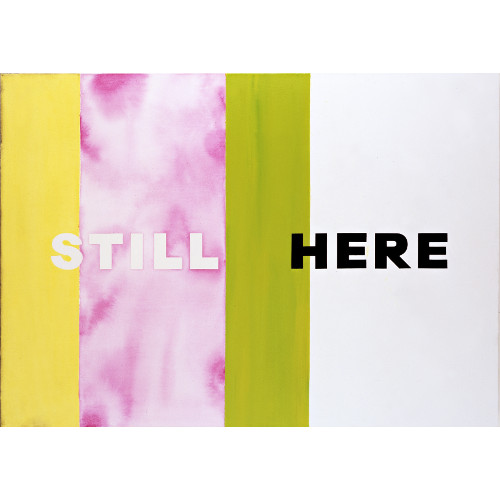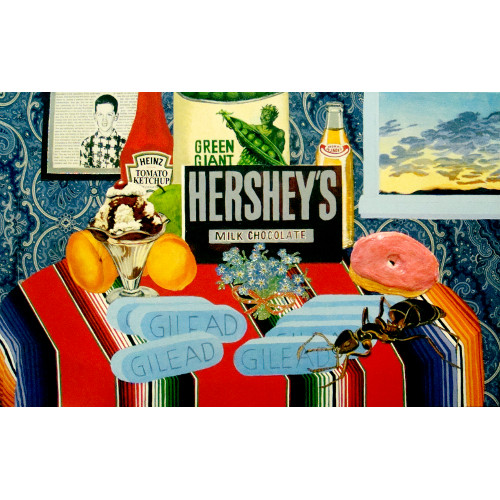BY Christopher Treacy
Most would assume that within the art world, stigmas about HIV and AIDS would have petered out years ago. So many of our country's most talented art-world figures are gay, and AIDS has been responsible for huge losses within that community. It just seems like it'd be one arena wherein fear and ignorance would have taken a backseat by now.
But as Dr. Jonathan David Katz discovered as he went about developing "Art AIDS America" – a new exhibit focused on the cultural impact of AIDS in America – we'd be sadly mistaken. Katz, who's the University at Buffalo Visual Studies Doctorate Program chair, experienced the sad truth firsthand: Even in the enclaves of subversive creativity, there is still much resistance to open discussion about the disease and its ongoing impact, regardless of what lens the artwork may juxtapose. Perhaps most surprising is the chilling realization that resistance is still the rule, not the exception.
"This is the first major, traveling national art exhibit revolving around AIDS, and putting it on has been the most difficult endeavor of my life," Katz said over the phone. "We went to over 200 museums and yet, as it stands now, the show will hang in just four places. It's not going to San Francisco, not going to Chicago… After I did 'Hide/Seek,' which was the first queer-themed exhibit at the Smithsonian, I thought I'd climbed Mt. Everest. I figured it would all be coasting from there on in. I was wrong." (As of press time, "Art AIDS America" will be hosted in Chicago).
Katz detailed several issues behind his struggle to mount "Art AIDS America" as the exhibit's co-curator and primary marketing agent. Many owners were apparently reluctant to loan the artwork for fear it might get vandalized. The foundations of certain artists that made their names in AIDS-informed art didn't want to participate either, (keep in mind, these foundations are funded by the sale of artwork). More static at the intersection of art and commerce came from museum directors who Katz described as being "completely uninterested."
"Topicality is always a danger to the art world," he explained. "The concern is that once the issue at hand passes, the artwork will be deemed irrelevant. There's also this issue of 'AIDS exhaustion,' and many museum directors seemed to feel that people just don't want to hear about AIDS anymore. Some said they loved the art but that the topic was too much of a downer from a marketing standpoint.
"And yet, that sort of sobering conversation about AIDS is lost on America at large," he continued. "We experienced more death than we have in major wars and still, we barely address it. It's a strange, bifurcated image of this country where some of us have walked around shell-shocked, our address books filled with the names of dead people, while others live their lives with no recognition of this cataclysmic loss."
The marketing difficulties do nothing to detract from the power of the show; maybe they even attest to it. Totaling approximately 140 pieces, Katz talks about the different viewpoints as 'permutations,' and singles out the earliest piece – Izhar Patkin's "The Unveiling of a Modern Chastity" – as evidence of the community's near-telepathic understanding of the illness and its deadly implications before we even really knew what it was. Patkin's image merely mimics the skin lesions (Kaposi Sarcoma) that gay men began presenting in increasing numbers, something he'd observed in a hospital waiting area. But the title reveals an inherent knowledge of the bigger picture. It's chilling: through these blotchy, raised, dark-hued red irritations, Patkin saw the future and somehow intuited what it meant.
Katz began work on the exhibit 10 years ago with co-curator Rock Hushka from the Tacoma Art Museum. His conceptual take on the show – something he lays out in an essay from the accompanying companion book – applies a positive, forward-moving spin on a dark subject matter. It's a complicated argument, but the crux is that when AIDS first reared its head as a creative topic, contemporary art was mired in some stagnant ideals. One postmodern concept in particular posited that meaning isn't perpetuated by artists, but rather is something wholly constructed in the minds of viewers. This renders artists irrelevant – mere conduits with no handle on the conveyance of the ideas coming across in their art. In that light, the viewers actually become the artists.
Interesting as that is, it removes authorship and self-expression from art. Katz's show poses the argument that AIDS lent a new social and political urgency to creative expression in visual arts, nudging us toward the concept of artistic meaning as a collective reality, i.e., a conversation between the artist and the viewer in which meaning is a two-way street.
As Hushka has put it, the show is a document of, "…how the artists' response to the epidemic utterly changed artistic practice in the United States."
"It was a two-handed problem," Katz said, describing the art climate of the time. "We had a Republican controlled government which engaged in the most explicit queer-bashing and AIDS-bashing possible. We had Jesse Helms saying 'no federal funding for anything related to AIDS.' And then you have this pervasive thinking in the art world that artists have no sense of expression left, that viewers create all the meaning. AIDS began to challenge that."
Katz reveals a newfound, stealthy system of titling as a clear manifestation of this challenge, wherein pieces of art were untitled, but then given a parenthetical name. He uses artist Felix Gonzales-Torres' 1991 work "Untitled" (Placebo) – one in a series of so-called 'candy spill' sculptures – as a stunning example. The piece presents like an area rug: 40,000 pieces of silver-wrapped candy spread evenly in a weighty cluster. Viewers are encouraged to take a piece of candy, thus participating in the slow disappearance (deterioration?) of the piece over time. Are they creating space? Are they killing something off? Maybe a little of both?
"It inaugurates a combined series of metaphors," Katz said. "Putting this piece of candy in your mouth mimics the ceremony of Christian sacrament, but perhaps you're also engaging in the spread of AIDS. By participating, there's a sense of personal responsibility – you're now involved in the process. So, there's a camouflaging of deeply expressive meanings below the surface both in the titling and the way the art invites our engagement."
Katz went on to say that Torres' work does a great job of emblemizing the means by which HIV behaves in the body, thus using the same model as a means for proliferating the art world with a taboo topic. HIV covertly enters into healthy cells and converts them into little viral factories. One could argue that Torres enters a museum's immune system and causes it to carry his viral ideas.
"Art AIDS America" launched in Los Angeles in June. Considered a preview/trial run, it opened as part of an arts side-car to L.A. Pride and featured between 25-30 percent of the full show, which was unveiled in its entirety last month at the Tacoma Art Museum in Washington. From there it will travel to the Zuckerman Museum in Georgia before landing in The Bronx Museum of the Arts. Katz would love to see the show travel beyond those destinations, but doesn't hold high hopes for an expanded schedule.
"It's interesting, what we're seeing is how pop culture and high culture are moving at two completely different speeds," he said. "Finally in the museum context, it's safe for art to be talking about race. It's not where it should be, but it's better than it was. Queerness, however, is still stuck all the way 'back there' despite the ubiquity of queer figures on TV and, now, marriage equality. The time lag might best be explained by the fact that, with art, we're talking about high value commodities purchased by wealthy people."














